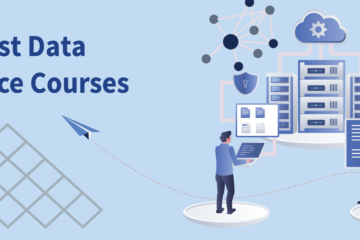How can educational institutions improve collaboration among students and teachers in the digital field? Implementing advanced communication tools, like video conferencing and collaborative software, allows for seamless interaction and sharing of resources. These tools foster real-time communication and ensure that all participants are engaged and have access to the necessary materials.
Voice over Internet Protocol, or VoIP solutions, offer an innovative way to bridge communication gaps and streamline interactions. Schools and universities can use VoIP to create more connected and efficient learning environments. Let’s read about its benefits in detail.
Improved Communication Channels
These solutions transform traditional communication methods by offering versatile and cost-effective alternatives. Unlike conventional phone systems, VoIP enables clear and reliable voice communication over the Internet. This means students and teachers can easily connect through various devices, whether in the classroom or working remotely. These systems support video conferencing, instant messaging, and screen-sharing features.
Cost-Effective and Scalable
One significant advantage of VoIP in education is its cost-effectiveness. Traditional phone systems often have high installation and maintenance costs. These solutions, however, require less infrastructure and lower operational expenses. This is particularly beneficial for educational institutions with tight budgets. Additionally, VoIP systems are highly scalable. As schools expand or add new programs, these solutions can easily accommodate these changes without major overhauls.
Enhanced Collaboration Tools
VoIP technology enhances collaboration through integrated tools that support group work and project management. Features like virtual meeting rooms, shared whiteboards, and collaborative document editing enable students to work together more effectively. These tools help break down barriers between in-person and remote learners, ensuring all participants have equal access to resources and opportunities.
Streamlined Administration
These solutions also streamline administrative tasks within educational institutions. Automated call handling, voicemail-to-email, and integrated scheduling tools simplify communication management for school administrators. This efficiency allows staff to focus more on supporting students and less on dealing with communication issues.
Moreover, VoIP systems can integrate with existing educational management software. This integration ensures seamless data transfer and enhances overall organisational efficiency.
Supporting Remote Learning
With the rise of remote learning, these solutions have become indispensable for maintaining educational continuity. These systems provide a reliable platform for virtual classrooms, enabling students and teachers to interact as if they were physically present. Features such as high-quality audio and video ensure that remote learning is as effective as in-person instruction. VoIP technology also supports asynchronous learning through recorded lectures and online discussion forums.
Boosting Engagement and Participation
These solutions are instrumental in increasing student engagement and participation. Facilitating interactive sessions increases students’ likelihood of contributing actively to discussions and group activities. Features like real-time polling, breakout rooms, and interactive whiteboards enhance the learning experience and keep students involved.
Enhanced Accessibility for All Students
VoIP technology helps make education more accessible to students with various needs. Features such as text-to-speech, real-time translation, and adjustable audio settings cater to diverse learning preferences and requirements. This inclusivity ensures that all students can participate fully and benefit from educational opportunities.
Seamless Integration with Learning Management Systems
VoIP solutions integrate smoothly with existing Learning Management Systems (LMS). This integration streamlines communication between teachers and students, facilitating easier access to course materials, assignments, and feedback. By consolidating communication and educational tools, VoIP enhances the overall efficiency of the learning process.
Real-Time Analytics and Reporting
VoIP systems offer real-time analytics and reporting capabilities. Educators and administrators can track communication patterns, participation levels, and usage statistics. These insights help assess the effectiveness of communication strategies and make data-driven decisions to improve educational outcomes.
VoIP solutions play a crucial role in enhancing collaboration in education. By offering cost-effective, scalable, and feature-rich communication tools, they improve interactions among students, teachers, and administrators. As educational institutions embrace digital transformation, VoIP technology will remain key in fostering effective and engaging learning environments.
Keep an eye for more latest news & updates on Gossips!




